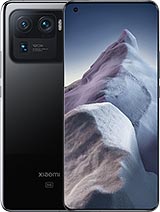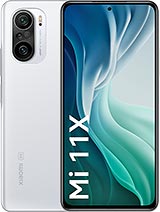Xiaomi Mi 11 Pro Review: Are the issues from the Mi 11 finally fixed? By gizmochina
Hello everyone welcome to gizmo china, I'm Kieran in the 11 video released in January. We introduced the powerful me 11 flagships to you, guys and told you why you should wait a couple of months for the mi 11 pro and the ultra. Now they have finally arrived. So was it worth the wait? Let's find out the answer. In the last video, we reviewed the mi 11 ultra today. Let's turn to the mi 11 pro.
To summarize, here are all the improvements on me 11 pro versus the standard me 11 model. First, when compared to the appearance and design of the mi 11, the mi 11 pro doesn't really bring improvements. On the contrary, the body of the pro feels a bit bulkier with a thickness of 8.53 millimeters and a weight of 208 grams. So if you are really concerned about the weight, the pro may disappoint you, because the two phones feel very different when holding in the hand. Another thing that you might have to think about is the higher price.
By far, the pro version is only available in China market and only comes with Chinese versions, which generally will be a bit cheaper than its global version. The pro starting price is 1000 RMB more expensive than the mi 11, while the global version's price is estimated to be at least 100 USD higher than the global me 11. , but other than the pricing and design changes. Let's take a look at what's upgraded on the pro model. First, I want to remind you, what's reserved on the pro model from the standard version.
For example, the excellent display shared by both the pro and the standard models is still one of the best phone displays. So it seems like a reasonable decision and the performance related hardware is shared by both the phones like the snapdragon 888 chipsets, accompanied by UFS 3.1 storage and lpddr5 memory, which is one of the best combinations that you can find among android smartphones in 2021, and the excellent dual speakers with Harman Kardon tuning are delightful to listen to, but the most significant upgrade in the pro model is the rear camera setup. The main camera is upgraded to a top one featuring the Samsung gn2 sensor, which is the biggest camera sensor that you can find on a smartphone right now. The m11 ultra the best and the most expensive model among the 11 series is also equipped with the camera sensor for its main camera. The 11's useless, 5 megapixel tell macro camera, does not make it to the mi 11 pro Xiaomi replaces it with an 8 megapixel telephoto camera, which supports five time: optical zoom and up to 50 time, digital zoom.
As for the wide-angle lens Xiaomi, didn't do any changes with this 13 megapixel one. So, let's check out what exactly we got and start with its main camera. Thanks to the larger sensor. Generally, the pro samples were more excellent at delivering a higher contrast, image and, at the same time, have better noise control over the dark areas, and if we look closely at their colors, it's not difficult to find out that the pro model presents rich colors with natural transition, but sometimes we may argue whether the images were a bit over processed. Another advantage of the large sensor is the natural aperture both effect compared to the m11.
The autofocus both blurring is closer to a truly optical effect that we would usually see on mirrorless cameras, and the fringing issue also got fixed well on the pro model, but the pro model didn't get a complete victory in the main camera department. Due to the 50 megapixel resolution, 108 megapixels of the mi 11's main camera brought higher image. Clarity with sharper edges detail no matter for the normal mode, with the 24 megapixel resolution or the original 108 megapixel mode from the samples shot during the day. It's pretty easy to estimate their night performance. No doubt the pro model's larger sensor improves the overall night creation, it's much easier to get a brighter image, with better noise control and richer detail on the pro model and, more importantly, the shooting experience is much smoother and faster than the standard me 11, especially for extremely low light conditions.
The pros still maintained excellent performance and on the pro model, now it's not really necessary to turn on the night mode in most night scenes. Instead, sometimes you can even have better images in the normal mode, with AI adjustment on, as for the wide cameras, there is no significant image quality gap between their samples. Both of them are good, and the samples didn't really surprise us with the 13 megapixel resolution. It is worth mentioning that as flagship models, there are already flagships with better wide angle cameras even with Xiaomi. There is already one phone offering a better wide angle, camera, which is the ultra version.
Although there is no hardware upgrade on the pro model, we still want to point out a tiny difference in the samples. The image distortion seems more serious and hasn't got optimized as well on the pro model, and probably you may also notice the difference in their color preferences. Look at the images here. We feel it doesn't make the image look better. So, let's now talk more about the night.
Shots just check the samples here. Another significant upgrade is the optical five-time zoom capacity, the exclusive telephoto camera of the pro model works. Well, although it only features 8 megapixel resolution, the image is still much sharper and clearer than the digital zoom of the mi 11. , and the night mode also works well in the five-time zoom shooting, which greatly improved the overall brightness and stability. As for the performance, there is no obvious improvement when compared to the mi 11, as the pro shares the same setup.
On the contrary, the mi 11 seems to perform better after getting continuously optimized in the last couple of months. In the benchmarks we tested, the results of the m11 are slightly better than the mi 11 pro. For example, it gets a slightly higher score in geek bench 5's multi-core test and takes a small lead in the new an tutu benchmark and is slightly better in 3dmark's GPU test, and our gaming tests also support the fact that by far the mi 11 pro didn't have a pro performance. Although Xiaomi claims it has an upgraded cooling solution in the PUBG mobile china version, the 11 pro was allowed to run at 90fps under smooth graphics. While the global version, it's only allowed to run up to 60fps so to access a higher frame rate.
Our PUBG test was done with the china version. The pro finished the test easily, with a stable frame rate at around 90 fps in generation impact. Actually, the pro performed pretty well and achieved an average frame rate of 52.16 fps, but we also found that it had frequent performance throttling down at from the 9th minute, probably because of the old thermal issue of the snapdragon 888 chipsets, and let's take a look at the mi 11's performance, the mi 11 was able to run at a higher frame rate at 55.12 fps and maintain a performance output for a longer time. CPU throttling down still happened, but it was less frequent and if we look at their CPU temperature, it's not difficult to find that the mi 11 was running at a higher temperature. The fact is that the pro probably got slightly better cooling, but it's not so significant to reflect in its gaming performance at this moment.
Actually, the surfaces of these two models were really hot. During the 30-min gaming test. We are not kidding if not for the gaming test. I would never have played the game on these two models for over 10 minutes under the highest graphic settings in Indian legend, the situation was quite similar. The mi 11 pros frame rate is still a bit lower than the standard model.
The heating issue still existed on the pro model and the temperature of their surface also raised up to around 50 degrees Celsius during the gaming test. So here we really suggest those who want to play heavy games on the mi 11 series, it's better to use an external cooling fan for a better gaming experience. The solution of battery and charging is also upgraded on the mi 11 pro. The full charge test took us only 37 mins with the included 67 watt charger, and the wireless charging also got amazingly improved, which can provide up to 67 watt fast wireless charging efficiency in the actual test. It took a few minutes longer to fully charge back the battery about its 5000 milliampere hour battery life.
The improvement is not so obvious, just check our results here. So that's all about the m11 pro. The pro model comes with a bulkier body and a similar design offering a compromise between the b11 and the m11 ultra when compared to the mi 11. Indeed, it's upgraded with better camera, setups and better charging solution, but at the same time, it's priced higher too. So what do you think of the pro model? Does it live up to its pro title? Just let us know what your thoughts are down below, if you like our videos and want to see more, please hit to subscribe and like buttons, your support means a lot to us.
Thanks for watching this is Kieran from gizmo china, and we'll see you soon.
Source : gizmochina





























